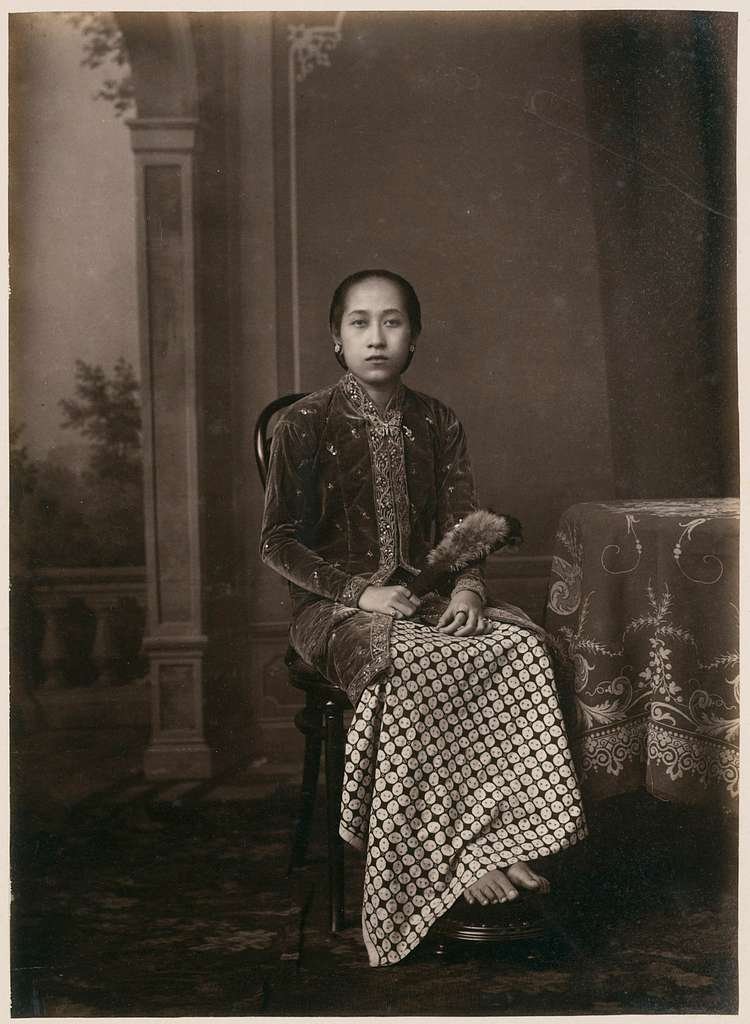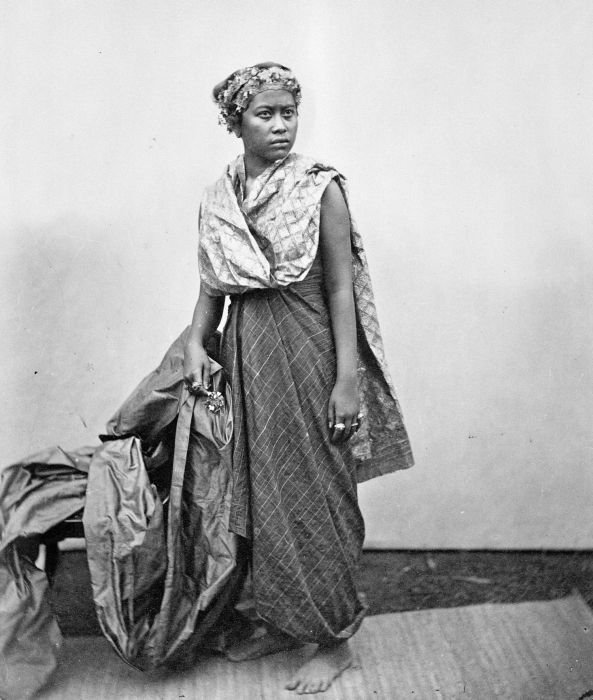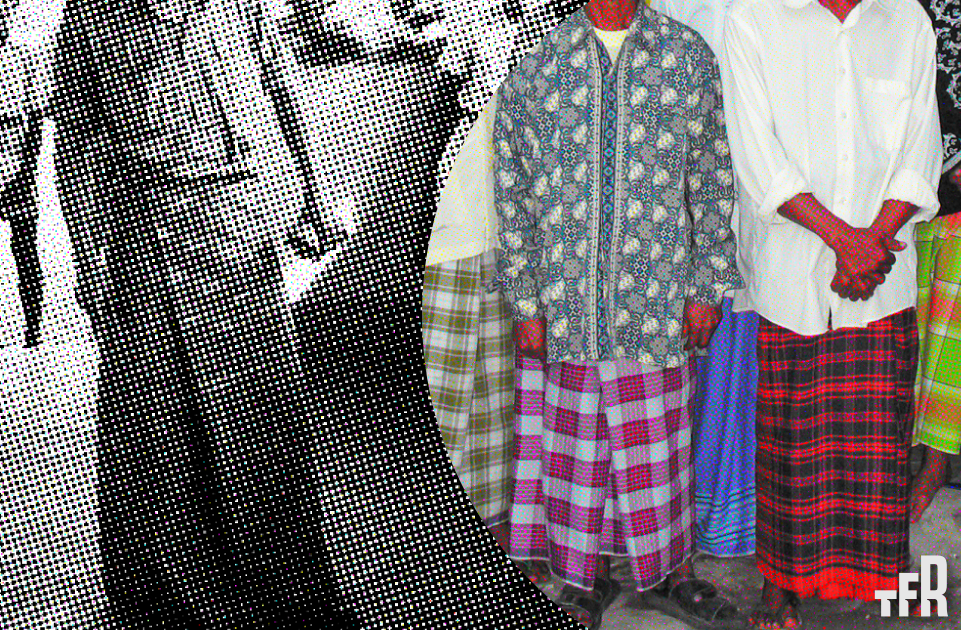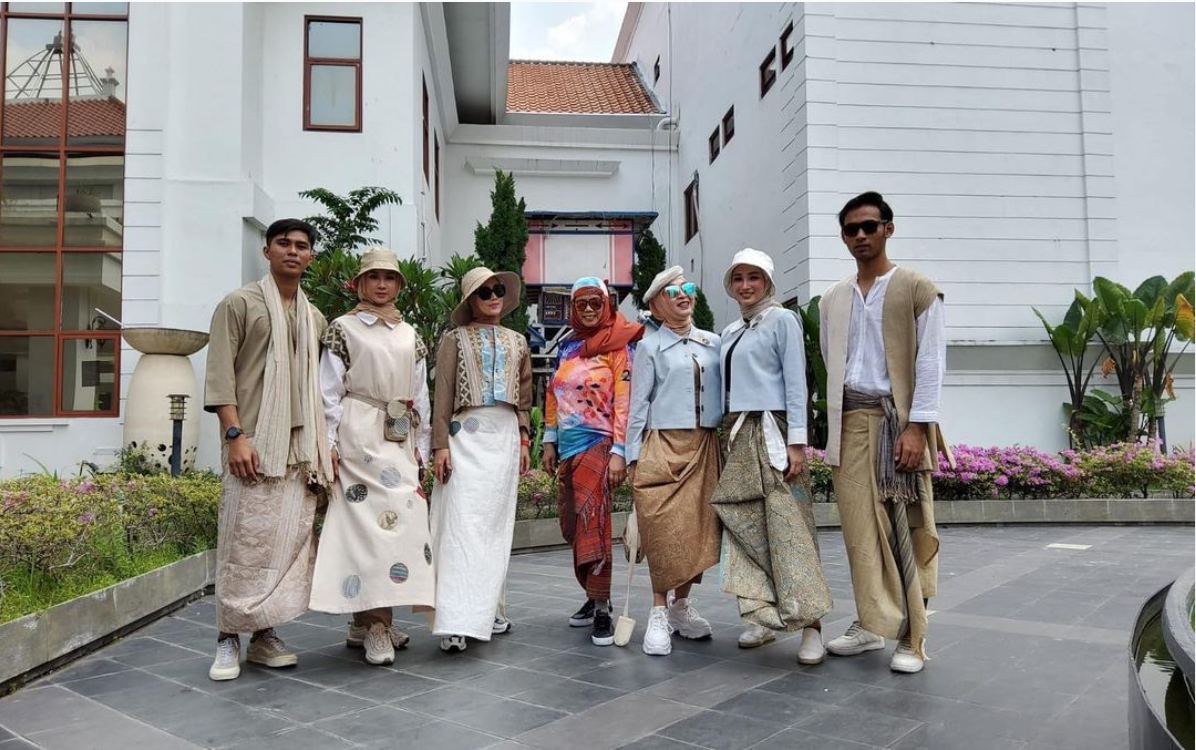Sarong reinvented: How sarong can strengthen Indonesia’s fashion industry
Written by Ilman Ramadhanu | Read in Indonesian
In 2019, President Joko Widodo designated 3 March as a National Sarong Day to celebrate sarong as one of the hallmarks of Indonesian culture.
Sarong is a cylindrical garment or length of fabric worn by wrapping it around the chest or waist, which in Indonesia is usually worn for formal or traditional events depending on the motifs on the fabric.
Though, the image of sarong most ingrained in Indonesian local culture is perhaps its use as a uniform for santri (a student in Islamic boarding schools known as pesantren) and a plaid-patterned cloth worn by men to pray at the mosque or to do ronda (night patrol).
For a long time, this is what sarong means in Indonesia. A sort of costume worn only within the bounds of its traditions, which generates a perception that sarong is the opposite of contemporary fashion.
A movement called “Sarong is My New Style” emerged to change this perspective in the hopes of making sarong a symbol of Indonesian contemporary fashion.
Making sarong an essential clothing option
Started back in 2011, the main purpose of this movement is to get people to wear sarong on a daily basis. “Most of our clothes are Western clothes. For bottoms we have pants or skirts, so why don’t we also wear sarongs too?” Dina Midiani, one of the founders, told TFR News.
Their plan of action is by creating campaigns or events in which sarong is a dress code in order to show people how to use sarong as an everyday wardrobe option.
Source: Instagram @sarongmovement
Dina created this movement because she wanted to strengthen Indonesia’s creative economy by relying on local culture. She chose sarong, out of the many choices of traditional Indonesian clothes, due to its versatility as it can be worn in many ways and by anyone of any gender.
Not only that, the fabric often used to make Indonesian sarong, which usually is wastra fabric, possesses such originality that Dina thinks it brings something new to the global fashion industry.
Much like kilt, a plaid wrap-around skirt native to Scotland, that has been modernised by contemporary designers, Dina feels that Indonesian sarong could be the emblem for Indonesia’s contemporary fashion in a global stage, “(Indonesia) wants to be a trendsetter and a fashion centre, but we need to contribute something (to fashion) and sarong could be that.”
Changing the stigma of sarong
But before all that could be achieved, one challenge facing this movement is the stigma surrounding sarong. “We created a focus group discussion with the media to try to see their responses. A lot of them supported the idea, but there were those who thought that sarong is not fancy and fashionable,” Dina explained.
Changing this narrative is significant in the success of this movement. This is why this movement continuously promotes the idea of sarong as daily wear. “We want to change the image of sarong, from being perceived as ndeso (primitive) to just our simple daily fashion style, so we invite everyone to start wearing sarongs in their daily lives.”
The role of young people, particularly young men, is also critical. As Dina pointed out, throughout her experience holding events for this movement, the majority of the participants were middle-aged women, which she fears would preserve the narrative that sarong equals old.
Today, formal shoes are not only worn with suits, but also with jeans and t-shirts, overalls, or shorts and skirts. The way dress shoes were worn in the past are elevated and they can even be worn daily. With formal tailoring regaining traction, there is now a comfort side of formal wear that attracts a greater market.
How the stigma came to be
The stigma surrounding sarong as something primitive or inferior did not just emerge out of the blue, but rather happened quite systemically.
In 1872, during the Dutch colonial era, a law was passed requiring residents in Indonesia to wear their respective ethnic clothing in public spaces. It means that those who were of Dutch-descent had to wear European-style clothing and Indonesian natives had to wear traditional clothing.
The reason behind this was to accentuate the racial and social hierarchy (Dutch, Chinese, Indonesian; in that order) that was in place and therefore creating a visible sartorial difference to indicate which is from the higher or lower class.
In Java, women wore kebaya and batik sarong while Dutch women wore dresses with crinoline. Though later on, Dutch women assimilated sarong as it was deemed more suitable to wear in Indonesian weather. However, even when the Dutch were wearing sarong, a slight differentiation was still made.



The photos above, sourced from Universiteitsbibliotheek Leiden and Tropenmuseum, part of the National Museum of World Cultures (via Wikimedia Commons) illustrate the style of the time.
The Dutch introduced their own designs into sarongs which were inspired by flowers, butterflies, or European fairy tales. The colour was also changed to a softer pastel colour palette as opposed to dark browns which is usually found in Javanese batik. This permeated more air of undesirability into Indonesian clothes, including sarong.
Sarong on the global fashion stage
On the global stage, it is not uncommon to see sarong on the runways. Many designers have incorporated sarong in their collection, but more as a seasonal item rather than as a basic item that customers could buy anytime.
Though, the current trend of skirts for men in fashion might open up a window of opportunity for sarong to enter the global fashion scene.
This trend is connected with the genderless fashion fever. In their latest collections, designers such as Willy Chavarria and Luar incorporated different iterations of skirts into their menswear pieces. Even global retailers such as ASOS have started selling skirts under their menswear category, indicating that this trend has become mainstream.
Within this trend, sarong came as a variation of a skirt, as could be seen from GmbH’s spring 2023 collection in which a silk white sarong with arabic letters was paired with a contemporary white buttoned up shirt.
Source: Instagram @gmbh_official
As menswear becomes more nuanced, Dina agrees that this opens up an opportunity for sarong not only to be more accepted as a contemporary clothing option for men, but also to enter the global stage. Especially considering that sarong in Indonesia has traditionally been worn both by women and men.
The emergence of this trend also proves that the purpose of the “Sarong is My New Style” movement is now more relevant than ever.
However, Dina feels that for sarong to reach international level, a strong commitment from the Indonesian fashion industry is required. “Designers should start incorporating sarong as a basic item in their collections and fashion schools should start incorporating sarong (into their curriculum). If many people start wearing sarong, over time, people will definitely want to wear them too. So, this is our job to deliver this message to the people.”





















